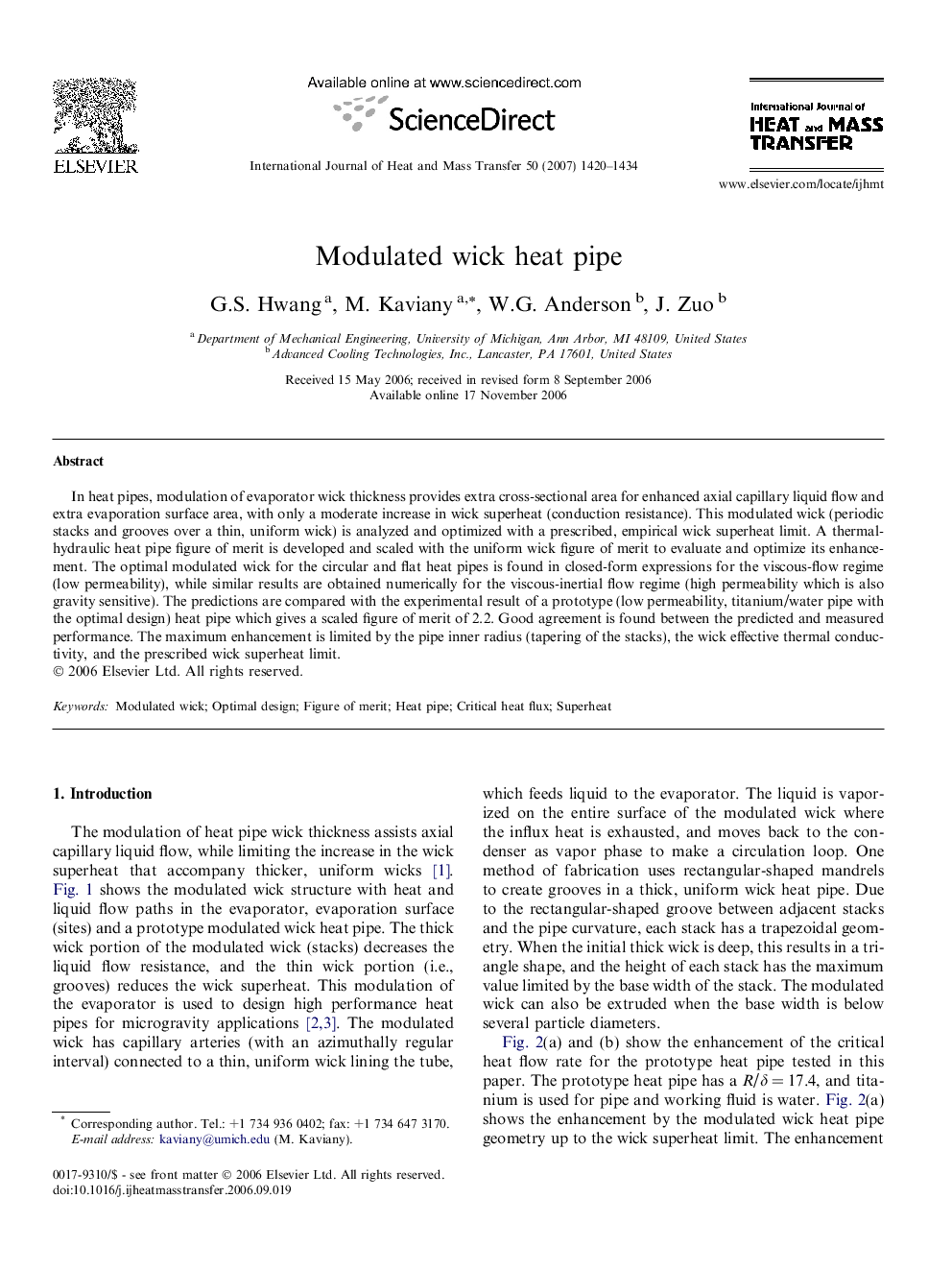| Article ID | Journal | Published Year | Pages | File Type |
|---|---|---|---|---|
| 661088 | International Journal of Heat and Mass Transfer | 2007 | 15 Pages |
Abstract
In heat pipes, modulation of evaporator wick thickness provides extra cross-sectional area for enhanced axial capillary liquid flow and extra evaporation surface area, with only a moderate increase in wick superheat (conduction resistance). This modulated wick (periodic stacks and grooves over a thin, uniform wick) is analyzed and optimized with a prescribed, empirical wick superheat limit. A thermal-hydraulic heat pipe figure of merit is developed and scaled with the uniform wick figure of merit to evaluate and optimize its enhancement. The optimal modulated wick for the circular and flat heat pipes is found in closed-form expressions for the viscous-flow regime (low permeability), while similar results are obtained numerically for the viscous-inertial flow regime (high permeability which is also gravity sensitive). The predictions are compared with the experimental result of a prototype (low permeability, titanium/water pipe with the optimal design) heat pipe which gives a scaled figure of merit of 2.2. Good agreement is found between the predicted and measured performance. The maximum enhancement is limited by the pipe inner radius (tapering of the stacks), the wick effective thermal conductivity, and the prescribed wick superheat limit.
Related Topics
Physical Sciences and Engineering
Chemical Engineering
Fluid Flow and Transfer Processes
Authors
G.S. Hwang, M. Kaviany, W.G. Anderson, J. Zuo,
